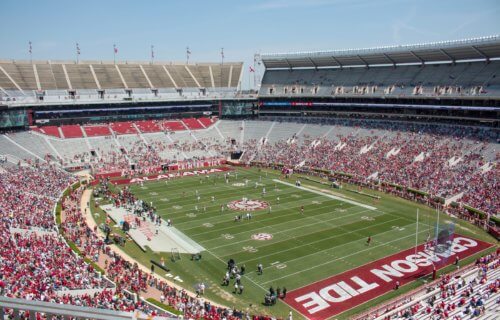ATLANTA, Ga. — College football is big business in the South. Schools like Alabama or Georgia regularly see tens of thousands pack gigantic stadiums on game day, in addition to thousands more that travel to the surrounding area for tailgating and partying. Many fans who don’t live locally rent out “game day homes,” or investment properties near the stadium that sit vacant the rest of the year. While this may bring an economic boon to college towns during the school year, a new study reveals absentee property ownership in many small college football towns is having a negative effect on the actual residents of those communities — and their real estate prices.
For the first time ever, researchers at Georgia State University attempted to quantify and map out local geographies relevant to game day home investments. The team analyzed data pertaining to over a dozen college towns in the South, including Athens, Georgia, Gainesville, Florida, and Auburn, Alabama. Next, they put together a comprehensive analysis of Starkville, Mississippi, home of the Mississippi State Bulldogs. Study authors included everything from local property ownership records, to construction permits, to U.S. Census data in this investigation.
“The city of Starkville only has 25,000 people, and Mississippi State students make up nearly another 20,000,” reports Taylor Shelton, an assistant professor of geosciences and the study’s author, in a university release. “But the football stadium holds over 60,000 fans, so the population of the city doubles or triples on game day weekends, meaning the entire nature of the town is transformed.”
Who owns these properties?
The investigation led researchers to conclude that roughly five to 10 percent of all houses in Starkville are likely game day homes. Moreover, the majority of Starkville’s net growth in housing units over the past 15 years has been made up of vacant properties that are in all likelihood game day homes. In fact, researchers estimate that up to 75 percent of some neighborhoods are strictly game day homes.
Researchers say most are owned by either wealthy alumni or fans and investors who’ve barely stepped foot on the property. All in all, this is a “net-negative” for locals, study authors conclude.
“Having so much of the activity in the housing market focused on these limited-use, largely vacant properties drive up housing prices for the people who actually live and work in the area,” Shelton explains. “A lot of these smaller towns are now seeing rapid growth, but it really cuts into the kind of vibrancy and energy that you expect from a college town.”
Do states place money over local well-being?
Changes to zoning and tax laws can undo some of these problems, but the research team reports such changes have been very slow to materialize due to all of the financial benefits these game day homes provide state and local governments.
“Bigger cities have implemented vacancy taxes on properties to discourage people from buying homes for speculative or temporary uses,” Shelton adds. “Being able to access some of that money and then reinvest it directly into affordable housing is a really simple step. But smaller cities are hesitant to do too much because they like the property tax revenue and they don’t have the simultaneous burden of providing municipal services to year-round residents.”
The study finds state laws that preempt localities from passing stricter regulations on landlords or developers often hinder areas like Starkville from making serious changes. According to Shelton, that means these issues will probably get worse before they get better.
“I hope this research can provide some legitimacy to efforts to create a more just and equitable housing in these smaller cities,” Shelton concludes. “We should place the focus on what residents actually want and need to make their lives better, rather than having places that cater towards wealthy out-of-town alumni and fans.”
The study appears in the journal Cities.
